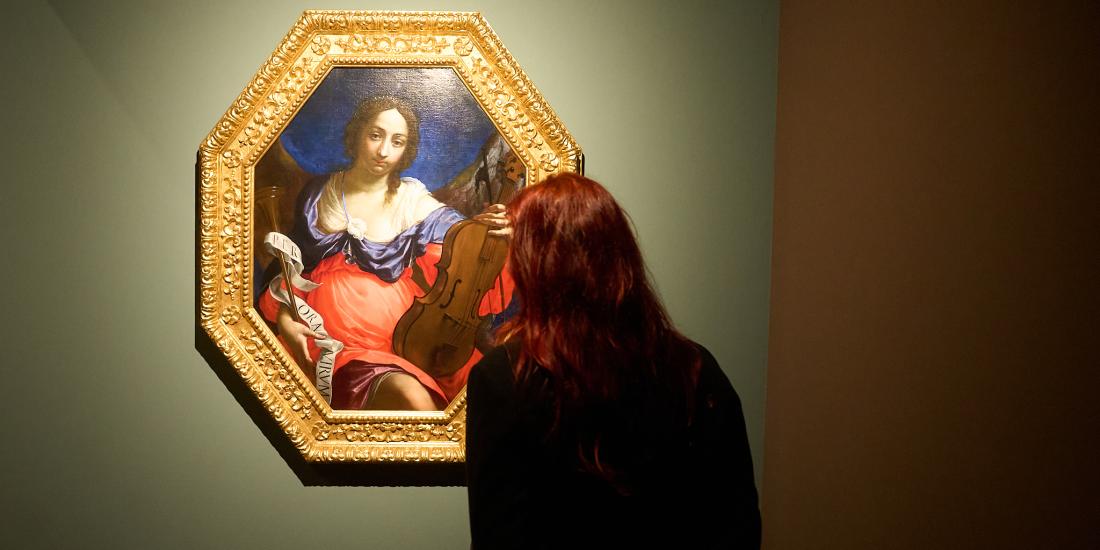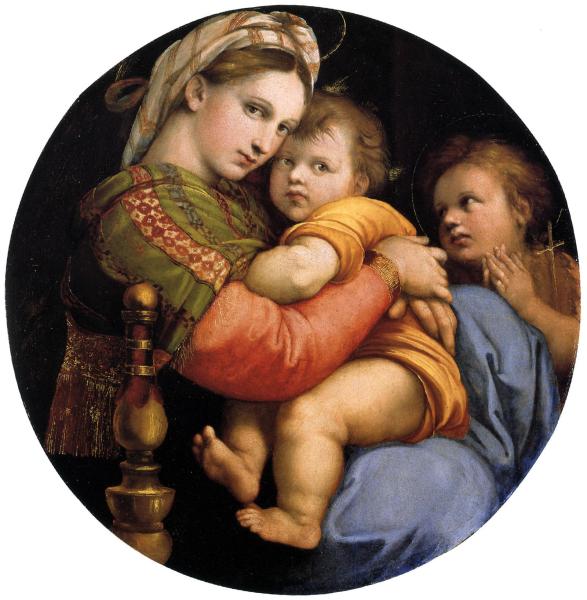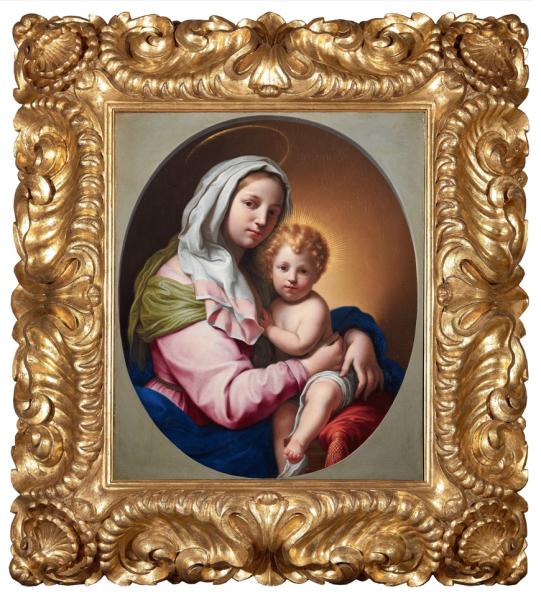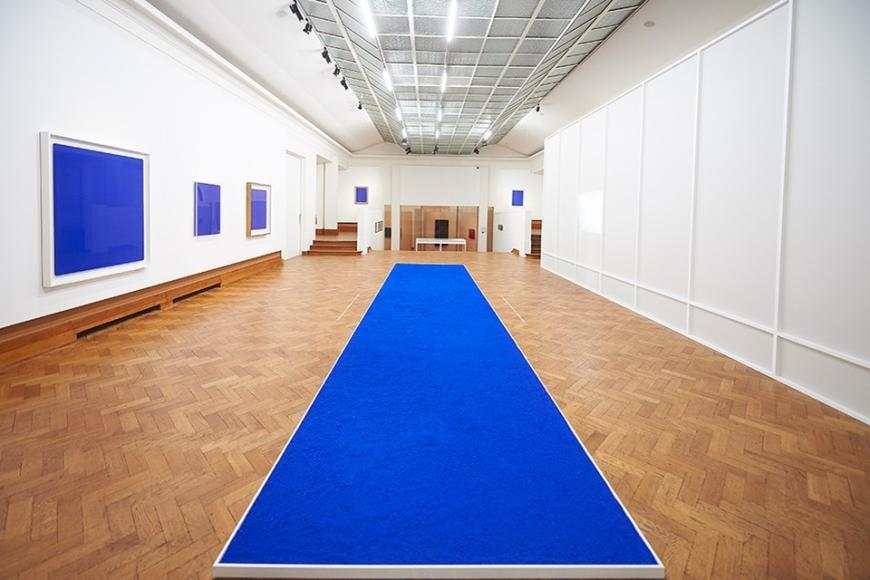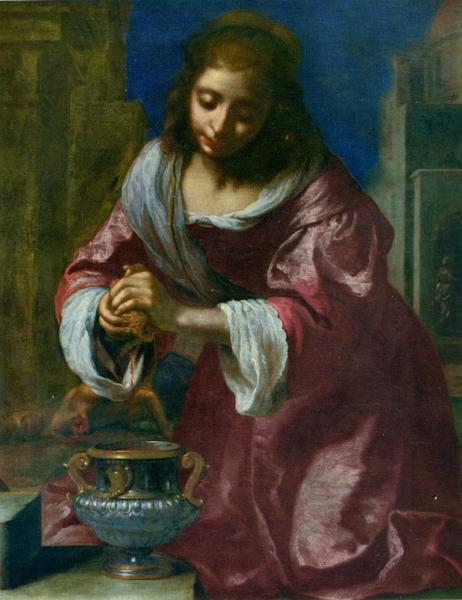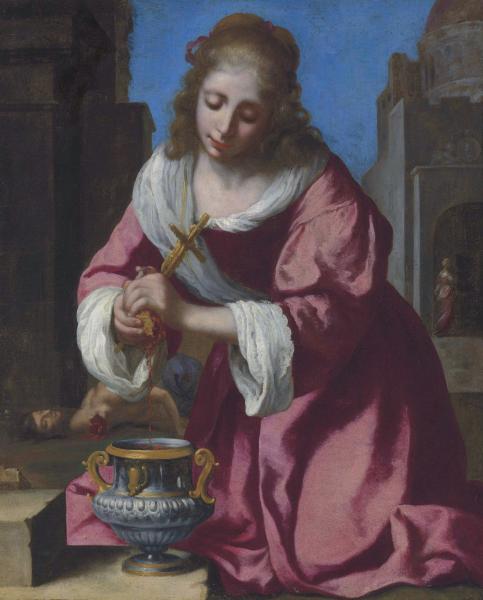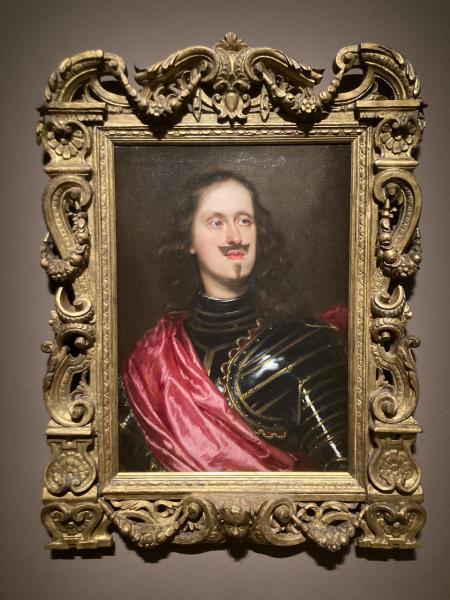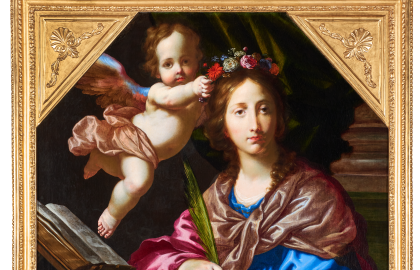All eyes on Raphael
Before we travel to the seventeenth century, let’s go back a little further in time. Florence is usually mentioned in the same breath as the Renaissance. Artists like Leonardo da Vinci, Michelangelo, and Sandro Botticelli were the stars of the city and far beyond. Raphael’s magnificent Madonna della Seggiola adorns the prestigious Palazzo Pitti – which later served as Napoleon’s Florentine residence. Mary and Jesus look you straight in the eye.
We find that same penetrating gaze in the exhibition in the works by Onorio Marinari. His Madonna was painted around a century later and also ended up in Palazzo Pitti. The two Madonnas used to look each other straight in the eye, as they now look at you. It is therefore extremely likely that Marinari was inspired by the work of grandmaster Raphael. The structure of the composition is similar, but Marinari chose to limit his tableau to Madonna and Child, without John the Baptist. You’ll find that this isn’t the only piece in the exhibition that tries to enchant you with a poetic gaze.
Magnificent frames
The paintings in the exhibition have frames that are works of art themselves. The one from Felice Ficherelli’s Allegory of Poetry is pure poetry. No expense was spared. The blue lapis lazuli stone in particular immediately catches the eye. For centuries, this beautiful semi-precious stone was pulverised into ‘ultramarine’ and used as a pigment for painting. To give you an idea of its importance at the time, the stone was worth more than gold and was sometimes called the ‘most perfect colour’.
And it wasn’t just our Baroque painters that had this knowledge. The Egyptians were already using lapis lazuli in amulets due to its magical powers. Although he was not the wealthiest artist, Johannes Vermeer was a great lover of this expensive pigment. That’s why the blue turban worn by the Girl with the Pearl Earring shines as brightly today as it did back then. But modern artist Yves Klein takes the crown. He decided to use only ultramarine as a pigment to develop his ‘International Klein Blue’.
Ficherelli or Vermeer?
That bright blue can also be seen in the exhibition in another of Ficherelli’s works, but not in the frame this time. Saint Sebastian Tended by Saint Irene is not only reminiscent of Johannes Vermeer in terms of colour palette, but the serenity of the scene is also striking. Ficherelli and Vermeer are sometimes compared to one another. Although it was mainly the Italian master who inspired his Dutch colleague.
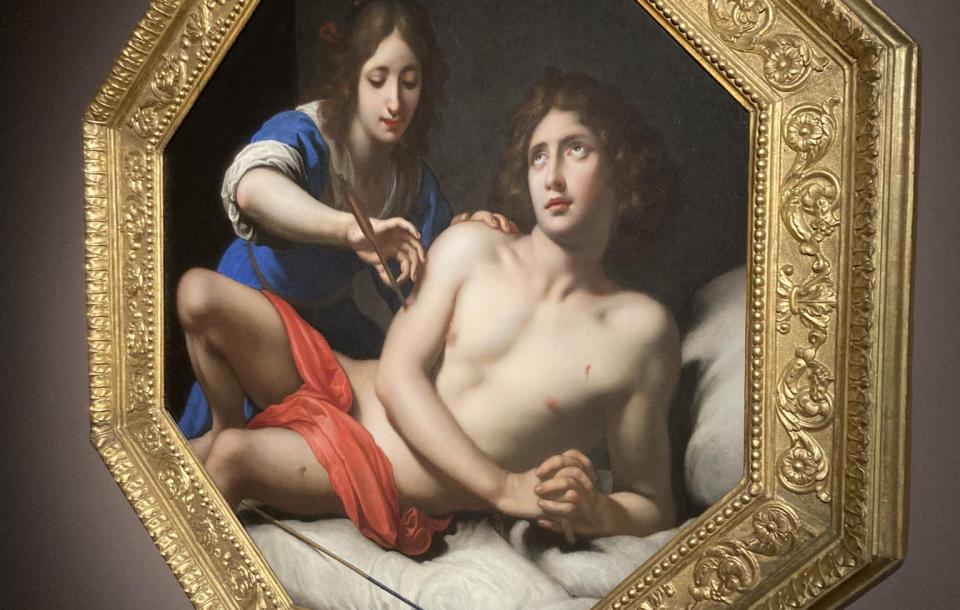
The two artists were contemporaries and a work by Vermeer was long attributed to Ficherelli. The paining Saint Praxedis is signed ‘Meer 1655′ and based on material-technical research, the Rijksmuseum concluded that it was indeed a Vermeer, who had made an almost identical copy of Ficherelli’s work. Thanks to the Medici family, Ficherelli’s works were able to travel widely, allowing the then unknown Vermeer to discover them. The alleged Vermeer sold for 7.8 million euros at Christie’s in 2014.
An Antwerp native in the service of the House of Medici
The Medici family is best known as the powerful Florentine banking family that exerted its influence on art and science in the Renaissance. But they also continued to make their mark in the seventeenth century. In the exhibition, you’ll discover a portrait of Giovan Carlo di Cosimo II de’ Medici (1611-1663) by Justus Sustermans.
This scion of the Medici family was captain of the Spanish fleet at the time of the portrait. He was one of the most important seventeenth-century art collectors and held pieces by such resounding names as Rubens and Raphael. When he died, his entire collection was sold to pay off his immense debts. The name of the canvas’s painter, Justus Sustermans, already gives away the fact that he wasn’t Italian. The Antwerp native was invited to Florence by the Medici family, and just never left. In 1621, he became court painter and continued to serve the House of Medici for the rest of his life.
